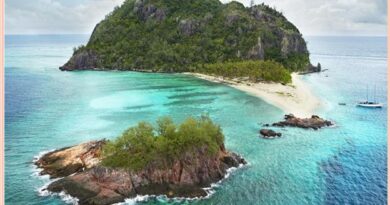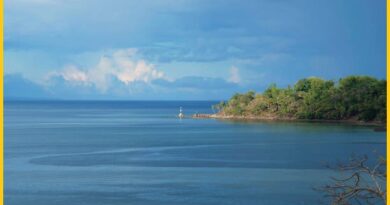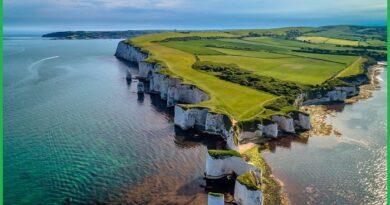Sangla Valley: An Unforgettable Escape to Nature’s Paradise
Sangla Valley
Sangla Valley is a picturesque valley located in the Kinnaur district of the Indian state of Himachal Pradesh. It is renowned for its stunning natural beauty, lush greenery, and the majestic Baspa River that flows through it. The valley is part of the greater Kinnaur Kailash range and offers breathtaking views of snow-capped peaks, apple orchards, and dense forests. Kinnaur is situated along the Indo-Tibetan border, bordered by Tibet to the east, and the districts of Lahaul and Spiti, Kullu, and Shimla to the north, west, and south respectively. The region is characterized by its rugged terrain, deep gorges, and lush green valleys. The Sutlej River flows through the district, adding to its scenic beauty.
1. Attractions near Sangla Valley
Baspa River
The lifeline of the valley, the Baspa River, offers opportunities for trout fishing and picturesque riverside picnics. Its crystal-clear waters are a delight for nature enthusiasts and photographers.
Kamru Fort
Located about 2 km from Sangla, Kamru Fort is a historical site with ancient architecture and a temple dedicated to the Hindu goddess Kamakhya Devi. The fort provides panoramic views of the valley.
Bering Nag Temple
A prominent temple in Sangla, dedicated to Lord Jagas, this temple is especially significant during the Fulaich Fair, a traditional Kinnauri festival.
Chitkul Village
Known as the last inhabited village near the Indo-Tibetan border, Chitkul is about 24 km from Sangla. It is famous for its scenic beauty, traditional wooden houses, and serene atmosphere.
Rakcham Village
Situated between Sangla and Chitkul, Rakcham is a quaint village surrounded by lush greenery and offers a peaceful retreat with its serene landscapes and welcoming locals.
Batseri Village
Another beautiful village in the valley is known for its traditional architecture and friendly locals. It’s a great place to experience the local culture and lifestyle. The valley offers several trekking and hiking trails, including the popular Sangla to Chitkul trek. These trails take you through lush forests, alpine meadows, and past scenic vistas. Sangla Valley is known for its apple orchards. Visiting these orchards, especially during the blooming season, can be a delightful experience.
Also read- Chitkul in Himachal: The Samurai Way
2. Sangla Valley weather
Sangla Valley, situated in Himachal Pradesh, India, experiences a range of weather conditions throughout the year due to its mountainous terrain. Here’s an overview of the weather patterns across different seasons.
Spring (March to April)
Temperature: 10°C to 20°C
Weather: Spring in Sangla Valley is marked by the blooming of flowers and pleasant weather. It’s a great time for sightseeing and enjoying outdoor activities. Days are mild and nights can be cool.
Summer (May to June)
Temperature: 15°C to 25°C
Weather: Summers are mild and comfortable, making it the ideal time for trekking, hiking, and exploring the valley. The weather is generally clear, providing excellent visibility for the surrounding mountains.
Monsoon (July to September)
Temperature: 10°C to 20°C
Weather: The monsoon season brings moderate to heavy rainfall, which can sometimes lead to landslides and roadblocks. The valley becomes lush and green, but outdoor activities might be restricted due to the rain.
Autumn (October to November)
Temperature: 5°C to 15°C
Weather: Autumn is characterized by clear skies and crisp weather. This season is ideal for trekking and enjoying the vibrant colors of the fall foliage. Nights start getting colder as winter approaches.
Winter (December to February)
Temperature: -10°C to 10°C
Weather: Winters are cold and snowy. The valley often experiences heavy snowfall, which can lead to road closures. It’s a beautiful time to visit if you enjoy snow, but be prepared for harsh conditions and check accessibility before planning your trip
The Best Time to Visit Sangla Valley
The best time to visit Sangla Valley is during the summer and autumn months, specifically from April to June and September to November. These periods offer the most pleasant weather, ideal for outdoor activities, sightseeing, and experiencing the natural beauty of the valley.

3. Sangla Valley in winter
Visiting Sangla Valley in winter can be a magical experience, but it comes with its own set of challenges and considerations. The valley experiences heavy snowfall, transforming it into a winter wonderland. The landscape is covered in snow, creating picturesque scenes and a serene atmosphere. Temperature is around 10°C to 10°C . Due to heavy snowfall, roads may become blocked or treacherous, and the valley can sometimes be cut off from major cities. It’s essential to check the weather and road conditions before planning your trip.
Activities
Snow Activities
Snow Trekking: Explore the snow-covered trails. However, ensure you have the appropriate gear and perhaps a local guide.
Snowboarding and Skiing: Although not a major skiing destination, certain slopes can be used for skiing and snowboarding by enthusiasts.
The snow-covered landscapes, frozen rivers, and traditional wooden houses create excellent photo opportunities. Experience the local Kinnauri culture and hospitality. Winter is a time when locals engage in various traditional activities and festivals. Enjoy the tranquility and peace of the valley away from the hustle and bustle of everyday life. Many guesthouses and hotels may be closed during the winter due to harsh weather conditions. However, some accommodations remain open, offering cozy stays with heating facilities. It’s advisable to book in advance and confirm the availability of heating.
Packing Essentials
Clothing-Thermal wear, heavy woolens, waterproof jackets, and insulated gloves. Waterproof and insulated boots to navigate through the snow.
Gear- Sunglasses (to protect against snow glare), sunscreen, and lip balm. If planning to trek or engage in snow activities, bring appropriate trekking gear and equipment.
Miscellaneous
Carry extra food supplies and essential medications as local stores might be limited in stock. Keep a portable charger and extra batteries for your devices, as power outages can occur.
Visiting Sangla Valley in winter offers a unique and serene experience, with the landscape blanketed in snow and a tranquil atmosphere. However, it requires careful planning and preparation due to the extreme weather conditions and potential accessibility issues. If you are well-prepared and up for an adventure, a winter trip to Sangla Valley can be an unforgettable experience.
4. Shimla to Sangla Valley distance
The distance from Shimla to Sangla Valley is approximately 225 kilometers. The journey typically takes around 8 to 10 hours by road, depending on road conditions and traffic.
Travel Route
Shimla to Narkanda (65 km): Head north on NH5 (National Highway 5) from Shimla. This stretch offers beautiful views of the mountains and dense forests.
Narkanda to Rampur (65 km): Continue on NH5 passing through Kufri and Theog. Rampur is a major town where you can take a break and refuel.
Rampur to Karcham (95 km): Keep following NH5 alongside the Sutlej River. After passing through Jeori, you’ll reach Karcham, where you leave NH5.
Karcham to Sangla (18 km): At Karcham, take a right turn towards Sangla. The road from Karcham to Sangla is narrower and winding, but it offers stunning views of the Baspa River and the surrounding valley.
5. How to reach Sangla Valley
Nearest Airport: The nearest airport is Shimla Airport (Jubarhatti), about 238 km from Sangla Valley. Alternative Airport: Chandigarh Airport, about 350 km away, offers better connectivity with more frequent flights. Take a taxi or bus from Shimla Airport to Sangla Valley.
The nearest broad-gauge railway station is Kalka, approximately 310 km from Sangla. Kalka is well-connected to major cities like Delhi and Chandigarh. From Kalka, you can take the famous narrow-gauge toy train to Shimla. The journey offers scenic views and takes around 5-6 hours.
By Road
From Shimla to Sangla Valley– Distance: Approximately 225 km. Route: Shimla → Narkanda → Rampur → Jeori → Karcham → Sangla. Travel Time: Around 8-10 hours depending on road conditions.
Himachal Road Transport Corporation (HRTC) operates regular buses from Shimla and Chandigarh to Reckong Peo, which is close to Sangla. There are private bus operators providing services from major cities to Sangla.
Reaching Sangla Valley involves a combination of travel modes, with the final leg typically being a scenic road trip through the mountainous terrain of Himachal Pradesh. Whether you choose to fly, take a train, or drive, the journey offers stunning views and a chance to experience the beautiful landscapes of the region.



